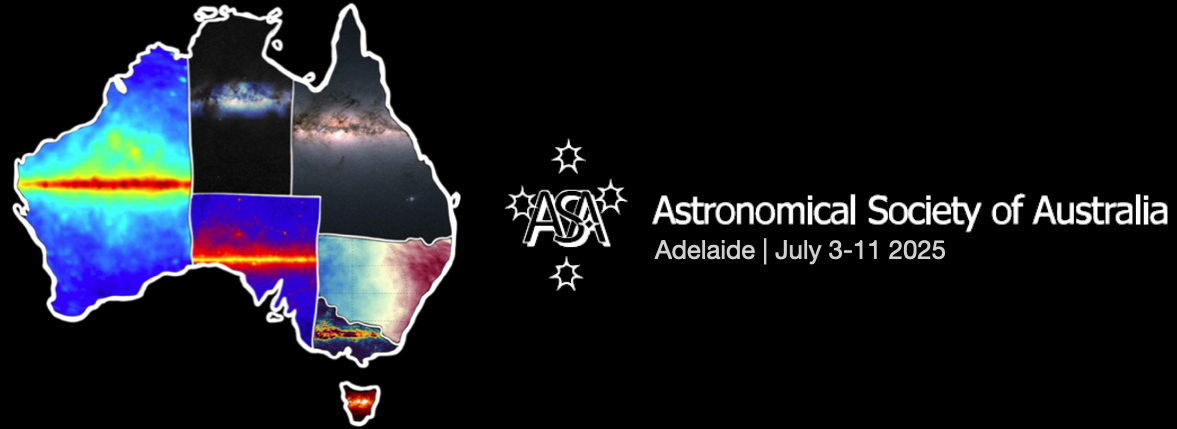Speaker
Description
In synchrotron transients, relativistic or sub-relativistic outflows interact with the surrounding medium, producing shocks that accelerate electrons and amplify magnetic fields. This generates synchrotron radiation observable at radio wavelengths. While the emission mechanism is broadly similar across events, variations in progenitor systems lead to a wide range of outflow velocities, energies, and light curve morphologies. Radio observations are therefore powerful tools for probing the physics of these extreme astrophysical events, from compact object interactions to stellar explosions.
In this talk, I will present the discovery and follow-up of a highly energetic and unusual radio transient identified in the Rapid ASKAP Continuum Survey (RACS), located offset from an actively star-forming galaxy. The source exhibits a 20-fold increase in flux density over 200 days and remains detectable in a declining state more than 1000 days after the initial detection. Follow-up observations with the Australia Telescope Compact Array (ATCA) at 2, 5, and 9 GHz, the Giant Metrewave Radio Telescope (GMRT) at 300–1300 MHz, and MeerKAT in L-band reveal an evolving spectral energy distribution consistent with a synchrotron origin. Plausible interpretations include a relativistic tidal disruption event involving an intermediate-mass black hole or an orphan gamma-ray burst afterglow—both of which are exceptionally rare, with few confirmed examples to date.

